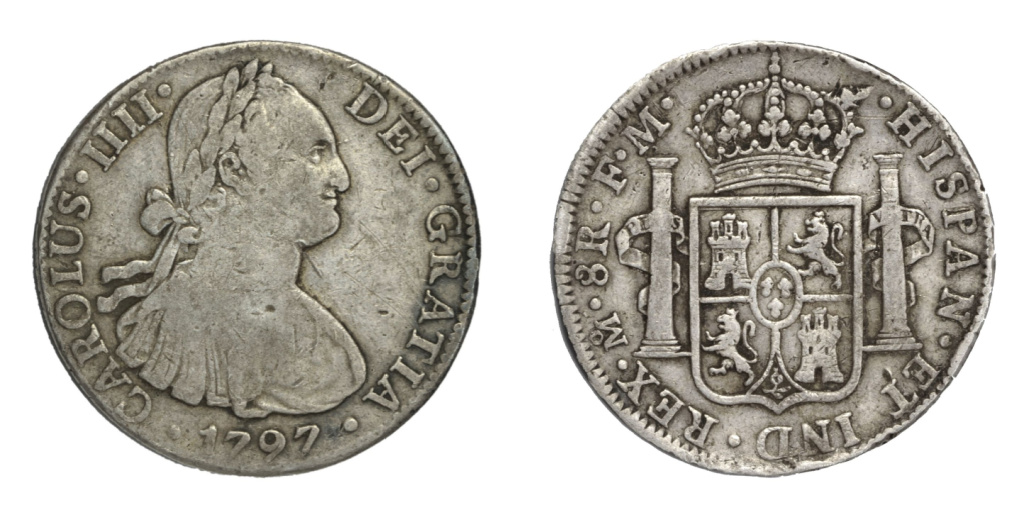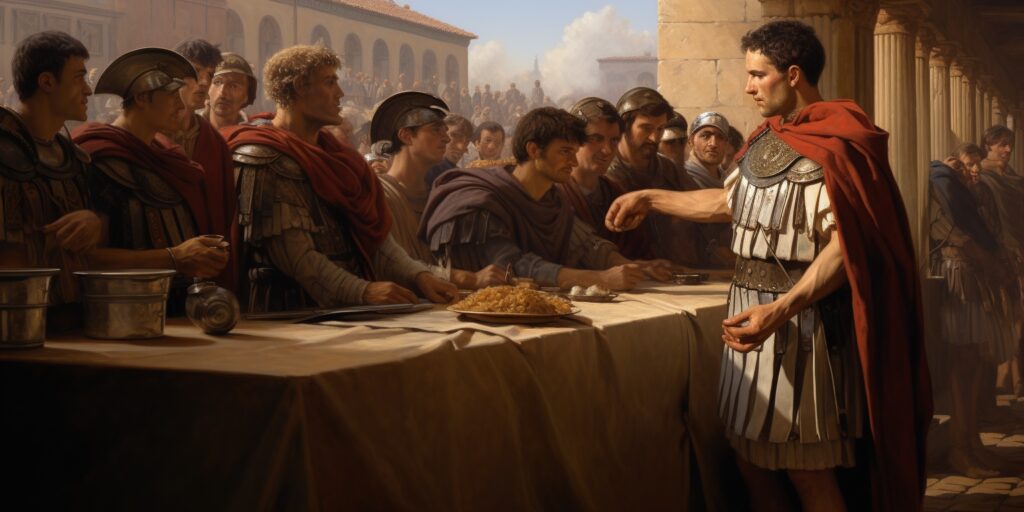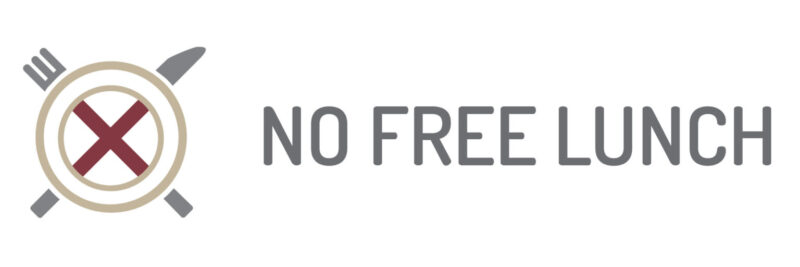Where did the dollar symbol come from? Is the word salary connected to Roman soldiers and salt? Discover the disputed origins of common money terms.

Money is so central to our lives that it has a language and symbolism all of its own. We might understand that relationship by learning the origins of the most common money terms and symbols. But as you’ll see, there is surprisingly little consensus on the origin of even the most recognisable monetary icons, including the mighty dollar, where our journey through the lexicon of money begins.
The competing theories explaining the origin of the dollar
No symbol can be more ubiquitous or more closely associated with money than the dollar sign, yet no one is sure of the origins of the dollar sign, with three competing theories.
1 – The Homegrown Theory
The homegrown explanation of the origin of the $ comes from the Bureau of Engraving and Printing of the U.S. Department of the Treasury.
They suggest that the iconic dollar symbol comes from superimposing a U on an S, the first two initials from the United States of America. The US Mint was established in 1792, and the $ became the official symbol of the US currency.
The problem with this theory is that the dollar symbol is thought to have been in use when America was known as the United Colonies of America, blowing the homegrown theory out of the water.
2 – The Peso Theories
The real was a common Spanish coin denomination from the mid-1300s, with the peso, first minted in the late 15th century, worth eight reals.
Spanish colonial conquests saw vast amounts of gold and silver extracted from Central and South America, and the peso became the first global currency, nicknamed pieces of eight by English speakers (and their parrots).
Those pesos circulating in the New World were roughly minted, almost square coins, thus popular targets of coin-clippers and counterfeiters.
However, peso produced in Spain were of better quality, featuring the Spanish coat of arms on one side and the twin pillars of Hercules on the other (featured in the hero image for this article).
The pillars of Hercules were rising out of the sea, representing the boundary between the Old World of Europe, centred on Spain, and the New World.
The suggestion is that the design evolved over time, with the addition of two hemispheres for the Old/New World between the pillars, becoming the basis of what is now the dollar sign.1
The competing peso theory around the origin of the dollar symbol suggests it came from accounting shorthand. 2 The peso was legal tender in America until 1857, officially denoted as Ps
Over time, it might have become less laborious to merge the P and S into a single symbol, with Spanish and US Dollars of equal value, though it seems strange that a proud young nation would adopt a foreign symbol for its currency.
3 – The Thaler Theory
In 1512, silver was found in the northwest of Bohemia (now the Czech Republic). In 1516, the town of Joachimsthal sprung up around the mining industry, founded by Štěpán Schlick; in German Joachimsthal means Joachim’s valley; the town is today known as Jáchymov.
The Schlick family produced silver coins mined at Joachimsthal, naming them Joachimsthaler, becoming one of the wealthiest families in Bohemia. Elevated to nobility, they became known as the Counts of Schlick (a great name for a Blues ensemble).
Joachimsthalers were regarded as excellent coins, inspiring copycats called thalers. In Low German, the word for thaler was daler, also meaning valley and the root of the English word dale, tolar in Czech, and in Dutch daalder.
So the assumption is that somewhere along the etymological road, thaler morphed into dollar. Dollars were produced both in the newly formed US Mint in 1794 and a Bank of England variant (1797).
The Origins of the English Pound
Though the debate rages on about where the dollar sprung from, there is consensus on the origins of another heavyweight of monetary language and iconography – the pound.
In fact, we get two explanations for one, given the pound is both a unit of currency (£) and an imperial unit of weight (lb).
The origins of the British pound sign can be traced back 1,200 years to its first usage by the Romans.
Initially employed as an abbreviation for ‘libra pondo‘ the basic unit of weight in the Roman Empire, libra translates to scales in Latin, so libra pondo literally signified ‘a pound by weight.’
In another case of corner-cutting, the Romans abbreviated libra to lb, which persisted along with Roman monetary conventions long after the Empire had collapsed.
In Anglo-Saxon England, the pound transformed into a unit of currency, equivalent to a pound of silver. Adopting both the Roman name and the sign, an intricate letter ‘L,’ the Anglo-Saxons integrated this symbol into their monetary system.
The addition of a crossbar came around the 17th century, with its status as an official currency symbol becoming cemented over time.
The origin of the phrase ‘shelling out’
If you feel frustrated about how much money you’re spending, ‘shelling out’ is a great phrase to demonstrate that emotion. ‘I’m shelling out a fortune on these new tyres’. “I’ve just shelled out for flights, now I’m being hit for airport car parking’.
But have you ever considered where the term ‘shelling out’ originates?
Nick Szabo, a computer scientist who many think is a strong candidate for the true identity of Bitcoin’s pseudonymous creator, wrote an essay in 2002 called ‘Shelling Out – The Origins of Money’.
In his essay, Szabo talks about primitive forms of money, including Wampum, used by Native American tribes for millennia before new settlers arrived in the 17th century.
Wampum consists of strings of durable skeleton parts from a form of crustacean – Venus mercenaria – with the appearance of tiny ringlets.
Though Wampum looks more like coral jewellery, it quickly became known as shell money among English-speaking colonists, and that reference has remained.3
Given that Venus Mercenaria is a type of clam, Native American money is also the origin of another slang term for money that was commonly used in early 20th century America – clams. “Hey, you owe me 50 clams”.
The debate over the origin of the word salary
We should all understand what the word salary means; it’s what those lucky enough to have a job receive as payment for their endeavours. But how many people know the origin of the word salary?
There is a popular money myth that the word salary comes from the Latin word for salt, which is sale.
The theory suggests Roman soldiers were paid in salt, supported by idea that the word soldier is a portmanteau of sale and the Latin verb, to give – dare. So sal-dare = give salt.

Though it makes a great story, there’s no historical evidence for the claim that Roman soldiers were compensated in salt – the claim is apocryphal or, in simpler terms, bullshit.
It is reasonable to assume that Roman soldiers and society valued salt and were keen to acquire it.
It is far more likely that our use of the word salary comes from ‘salarium’, for which there is some documented evidence of use in relation to payment, but no one is quite sure why.
Sources
1 – Life Among the Pirates by David Cordingly
2 – The curious origin of the dollar symbol (BBC)
3 – Trust-Ethnicity-and-Identity (Janet Landa)
No Free Lunch
There is no such thing as a free lunch, but if you’re hungry to find out why, we’re here to help.
You can learn the meaning and origin of the no free lunch concept, as well as the broader philosophy behind the idea that nothing can ever be regarded as free.
We look at our relationship with money and truth, examining all of the supposed shortcuts, life hacks and get-rich-quick schemes.
